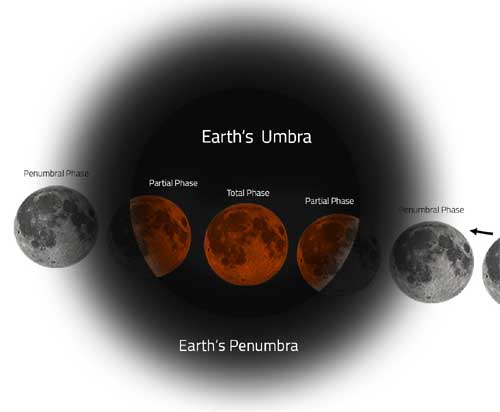Media Release
Udupi, Sep 3: The Earth will disrupt a lunar day and cause a total lunar eclipse on the night of September 7 and the early hours of September 8. The Moon will be engulfed entirely by Earth’s shadow and turn copper red around midnight.
A total lunar eclipse occurs when the Moon passes through Earth’s shadow, such that the entire Moon falls within it. During this time, Earth completely blocks direct sunlight from reaching the Moon. However, light scattered by Earth’s atmosphere allows red wavelengths to fall on the lunar surface, making the Moon appear red.

Astronomers measure brightness on the magnitude scale — the lower the number, the brighter the object. The full Moon, which usually has a magnitude of about -13, will appear very dim at -1.35. This means the Moon’s brightness will drop by 99.9%.
As Earth’s shadow falls on the Moon on September 7, the fainter shadow, called the penumbra, will appear from 8:50 pm, though it will not be distinctly visible. At 9:57 pm, the darker part of Earth’s shadow — the umbra — will begin to cover the lunar surface. By 11:00 pm, the Moon will be completely within Earth’s umbral shadow, with the eclipse peaking at 11:41 pm. The umbra will begin to recede at 12:22 am on September 8, and by 1:26 am it will have completely moved away. The eclipse will end at 2:25 am. The total duration will be 5 hours and 27 minutes, with totality lasting 1 hour and 22 minutes.
The eclipse will be visible from all parts of India and most Asian countries, including China, Mongolia, Russia, Malaysia, Singapore, Indonesia, and Japan. Countries in Southeast Asia, the Middle East, eastern Africa, and Australia will also witness the eclipse, either in full or in part.
Astronomy enthusiasts in India can safely witness the entire eclipse with the naked eye. Astronomers and skywatchers are hoping for clear skies throughout the event.